
Fashion’s Dirty Little Secret….. “Biodiversity Loss”
Fashion’s impact on biodiversity loss is massive.
By creating this abundance of clothing, that we think we need, but actually don’t – we are creating so much pollution and altering the land in such critical ways. Wasteful fashion is impacting our skies, our waterways and oceans, our soil, our fish, our insects, our animals and so much more.
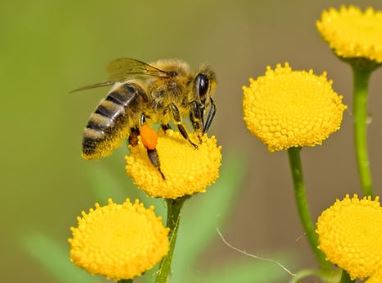
We are have an intense impact on biodiversity loss.
In every shirt we purchase, in every skirt we purchase, in every pair of socks we put on, in every nice fitting pair of sexy SAXX underwear we put on, we have to remember, these items came from somewhere. These did just not appear out of thin air on appear on the shelves of our favorite store. We forget that the shirt we have on our back has probably traveled over 10,000 km my combination of boat, rail, truck or air to get to us. Likely the item required over 2500L of water to produce, or even more! Jeans alone can take up from 10,000-20,000L of water to produce. 30-40 different chemicals may have been used to dye and/or process your garment (for softness or color etc.). Moreover, to make that cute little dress, greenhouse gases (GHGs) were emitted from all the different processes that are need to make that one garment all the way from virgin material to final product. Adding to this is the wastewater that is created from the factories. It is common that wastewater gets discharged into nearby rivers and streams, where children are frolicking close by.
Just for one item of clothing, countless amounts of pollution is created and habitat destruction takes place without us even realizing it. Why I am telling you this? Well, all of this destruction and pollution leads to the biodiversity of our ecosystems being impacted.

The Earth’s natural assets are made up of plants, animals, water, land and atmosphere and humans. Together we all form part of the planet’s ecosystems, which means if there is a biodiversity crisis, our health and livelihoods are at risk too.

What is biodiversity?
Nature is declining at a rate unprecedented in human history. According to the United Nation Report: Nature’s Dangerous Decline “Unprecedented”, the report finds that around one million species now threatened with extinction. This degradation of nature affects society as a whole, including businesses that rely on natural resources.
Marie-Claire Daveu, Chief Sustainability Officer and Head of international institutional affairs at Kering, reported: “Supporting biodiversity is essential for the stability and resilience of production systems across the world. Adopting a corporate strategy around biodiversity to support nature and at the same time create the foundation for more resilient supply chains is vitally important.”

According to the Primer for Developing a Corporate Biodiversity Strategy: Biodiversity, the living component of nature, is under threat; globally biodiversity is undergoing a precipitous decline, with many contributing and interacting drivers. Businesses and society will suffer if this rate of decline continues, not least because the goods and services provided by biodiversity are essential for the stability and resilience of production systems across the world. Fashion companies are highly dependent on the secure supply of a number of nature-dependent commodities: from animal skins through to cashmere and cotton. Given the importance of high quality raw materials, many of which come directly from nature, protecting biodiversity is even more of an imperative for this industry.
So what is biodiversity anyways? Biodiversity is the variety and variability of life on Earth. Biodiversity refers to the total species and ecosystems in a region/on earth and the ecological processes that they are part of, and is used to measure of health in an ecosystem. When we create anything, food, clothing etc., we can alter the biodiversity of the various species (plants, animals etc.) whether it be in the forest, grasslands, farms or oceans. Biodiversity of the region needs to be considered prior to just simply creating. Fashion can put pressure on biodiversity through climate change, habitat loss and degradation, over exploitation of biological resources and pollution.
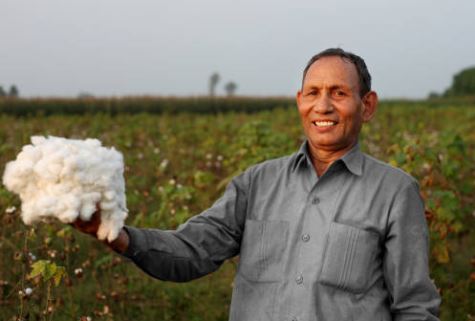
So what are some of the largest BIODIVERSITY OFFENDERS in Fashion?
There are many fabrics, fibres and minerals that affect our ecosystems, however here are just a few.
- Leather
The production of leather for fashion is linked to the meat supply chains, for cattle, sheep and goats. The livestock can have many negative environmental impacts, mostly linked to type of feed they are fed, manure storage, the intensity of grazing (which leads to land degradation and erosion) and in general methane production which leads to climate change. Also in some places, there is clearing of natural eco-systems for livestock production.

According to Vogue’s article on Fashion’s Biodiversity Problem, leather is one of the most profitable products of the livestock industry, which is a major cause of deforestation and uses about 80 per cent of agricultural lands globally. The International Union for Conservation of Nature has said the livestock industry is also likely the largest source of apparel-related water pollution, causing “dead” zones in coastal areas and degradation of coral reefs, among other environmental and human health problems.
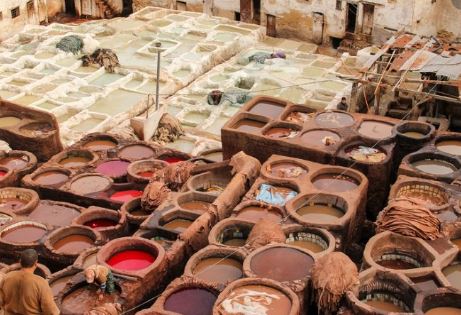
2. Fur
According to PETA eighty-five percent of the fur industry’s skins come from animals on fur factory farms. These farms can house thousands of animals, and as with other factory farms, they are designed to maximize profits, with little regard for the environment or animals well-being. Each mink skinned by fur farmers produces about 40 pounds of feces in his or her lifetime. That adds up to millions of pounds of feces produced annually by U.S. mink farms alone.

Fur-farm pollution is further compounded when all aspects of farmed-fur production are considered including: fur processing requires transporting feed to animals; removing animals’ waste, providing electricity for housing facilities, the slaughter process, using pesticides, vaccines, and antibiotics; transporting carcasses; transporting pelts to auction; transporting pelts to a fur tannery, which involves sorting, soaking, fleshing, tanning, wringing, drying, cleaning, trimming, buffing, and finishing; and transporting tanned pelts to a garment maker, a wholesaler, and so on. When all these processes are taken into account, the negative environmental impact from producing a fur coat and trim can be three times higher than making a faux fur coat. In some models, the environmental effects may be 10 times higher. According to The Humane Society of America, there are many issues with fur farming including, water pollution (high levels of nitrogen and phosphorus) and air pollution (from the incineration of animal remains).
3. Viscose
Viscose is a man-made fibre from wood pulp and are directly driving deforestation in the Amazon, Indonesia, North America and elsewhere. More than 150 million trees are logged for these fibres annually and use of the raw material has been climbing quickly, according to Canopy. It takes up to 4.5 tons of trees to make one ton of viscose. According to the Common Objective, viscose, a man-made fibre from a wood pulp source, is increasingly used in the fashion industry. Almost all the world’s viscose is produced in just a handful of places in China, India and Indonesia.
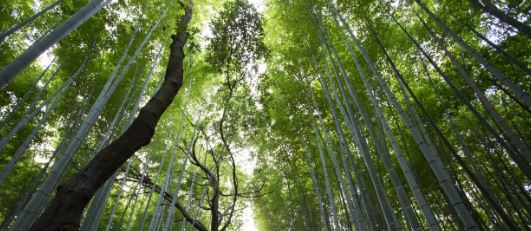
In the locations where it is made, the Changing Markets Foundations researchers found that manufacturers were dumping untreated wastewater, which is contaminating local lakes and waterways. The pollution that was created from viscose, had a devastating impact on the quality of life for thousands of local people. Chemicals used in viscose production include carbon disulphide, a powerful solvent is linked to neurological effects including confusion, and psychosis and coma. Large quantities of sodium hydroxide, or caustic soda, are also used in processing. This chemical is highly toxic if absorbed through inhalation, ingestion or skin contact. It is known to cause corrosion, skin burns and eye damage.
4, Cashmere
Cashmere comes from goats mostly in Mongolia and Inner Mongolia (China). The increase in the numbers of goats combined with climate change has led to serious degradation of the grasslands and run-off issues.

5. Cotton
Cotton is a very thirsty crop to cultivate and process, taking between 10,000 to 20,000L of water to make a pair of jeans and over 2,500L to make a T-shirt. Cotton farming uses high levels of pesticides and toxic chemicals that can seep into the earth and water supplies.

6. Polyester and Acrylic (Synthetic fabrics)
Polyester and Acrylics are made from oil. Due to the fact that they require intense amounts of energy to create (double the energy of conventional cotton) and take a long time to degrade, impacts are felt in landfills with the creation of contaminated leachate runoff, soil pollution and air pollution. Acrylic fibre creation has a huge carbon footprint and can be detrimental to the environment. Read here for more information on the environmental impacts of acrylic.
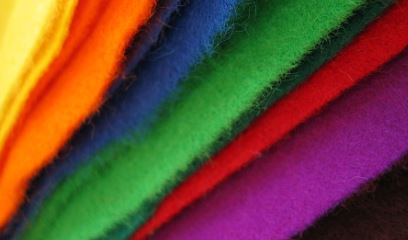
How the Value Chains of Fashion Impact Biodiversity
When you assess how the fashion industry is impacting biodiversity, you must break down each of the value chains. You must not only consider the materials a piece of clothing was made of (raw material value chain) but also look at all of the other part of the value chains, including manufacturing, transportation and consumer care. This way you can break down where exactly the environmental impacts are coming from. Below are a list of the 4 value chains and how they impact biodiversity (Biodiversity Risks and Opportunities in the Apparel Sector).
The fashion industry is impacting biodiversity loss at a high rate. We must consider all the value chains and assess the impacts of each.
Raw Materials – This includes the extraction, production and processing of raw materials such as cotton, wool, pulp, rubber, leather, metals, and petrochemicals, used in apparel products. Fibres made from farmed plants, such as cotton grown on farms, can require large quantities of water and pesticides to produce, while farmed animals can have impacts on the ecosystems where the animals are raised (e.g. water pollution created from animal waste, habitat degradation from grazing, and pasture expansion into natural habitat). Fibres made from wild plants and animals, such as wood pulp, skins or fur, can have significant ecosystem impacts when harvested unsustainably (e.g. diminished wildlife populations, local extinction). Synthetic fibres are often made from petrochemicals that require a lot of energy to produce, though can sometimes be recycled.
Manufacturing – The processing and assembly of raw materials into intermediate and final apparel products is the manufacturing part of the value chain. A typical example of a textile manufacturing chain would include: dyeing and wet processes; spinning, weaving and knitting; cutting and trimming; and, finishing and packaging. The manufacture of garments can also result in large environmental impacts. High-volume textile dyeing and finishing mills in particular are high-impact producers of water pollution and greenhouse gas (GHG) emissions. Many of these mills are located in lower income countries, and often lack the capacity to adequately monitor the environmental impacts of manufacturing processes or to enforce compliance with environmental regulations and standards.

3. Transportation of Goods – The distribution of finished or partially finished goods by shipping, rail, road, and/or air is required for goods to get to various suppliers and finally the customer. The apparel sector is a global industry with raw materials, manufacturers and retailers situated around the world. Transportation of raw materials, processed garments and finished products results in significant GHG emissions, and other forms of air and water pollution (e.g. particulate matter in air and fuel leakage in water). Designers and retailers must choose between container ships, rail, road, and/or air to move their garments during the production process, with each mode of transportation resulting in different levels of pollution.
4. Consumer care and end-of-life disposal – The use, maintenance, and disposal of goods by consumers. The way consumers clean and care for garments can also have a large environmental impact, for example through water and energy use. Garments that are frequently laundered or dry-cleaned can also create their biggest environmental impact once they have left the store. Designers are also increasingly releasing new collections throughout the year (as opposed to traditional seasons). This, combined with the limited recycling or reuse of old clothes in general (EPA 2013), adds substantially to household waste streams and contributes to environmental impacts through waste management, GHG emissions, and land take for expanding areas for use as landfills. Also with laundering clothes, micro-plastics are an issue as they come off of synthetic clothing during washing and can by-pass wastewater treatment plants and enter into the ocean. These micro-plastics can then be ingested by ocean life.
What can companies do to improve their impacts on biodiversity?
The initial goal for many companies will be to understand how and where their activities are causing impacts on biodiversity. This will also provide some insights into the relative size and scale of different types of impact across their enterprise. As impacts are explored, they should be linked to the company’s operations in a way that helps decision-making. Here are three ways companies can start to improve their effects on biodiversity.

- Assessing the risk to biodiversity – From a biodiversity conservation perspective, it is critical then to clearly understand when there are high risks of negatively impacting biodiversity as a result of direct impacts or supply chain impacts from operators in the apparel sector value chain. Look at such as areas as water footprint, GHG emissions, air pollution, land use, waste creation and water pollution throughout the value chains.
- Integrate credible certification schemes in your supply chains. Identify the most suitable standard and certification systems, based on company’s areas of sourcing (e.g. are environmental regulations in place and effective in the sourcing countries) and operation and the company’s values.
- Create a Biodiversity Strategy – This strategy should include improving soil and health and agriculture, move to deforestation-free supply chains, substitute hazardous chemicals with less hazardous ones, incorporate sustainable water management, contribute to sustainable livelihoods (improved agriculture practices and water stewardship for community and conservation benefits.
Regulations, Lists and Agreements – Biodiversity
There are many different biodiversity regulations, guidelines and best practices that can be followed. It is important to review what is used in the area where the operations are occurring. If nothing is being followed in a certain jurisdiction, use best practices to create the best solutions.

- The Convention on International Trade in Endangered Species of Wild Fauna and Flora (CITES) is an international agreement between Governments and is a UN Convention. The aim of the Convention is to ensure that international trade in specimens of wild animals and plants does not threaten their survival in the wild. Much of the focus of the Convention is on putting in place mechanisms to guide sustainable legal trade of species but CITES also focuses on combating illegal trade.
- The IUCN Red List of Threatened Species™ is the world’s most comprehensive information source on the global conservation status (threat of extinction) of animal, plant and fungi species and their links to human livelihoods.
- Local laws and bylaws in the various countries that operations are taking place.
- Review EcoLex, an Environmental Law website that lets you search per term. If you put in “biodiversity” you can see all of the regulations, publications etc. pertaining to this. This is a joint initiative of: IUCN, UNEP, FAO
If you would like to learn more about ECO-FASHION, visit our What is Eco-Fashion blog here.
About the author:

Elizabeth Cross is the founder and CEO of Moda Circolare, a sustainable fashion consulting agency. Moda Circolare, helps fashion and apparel brands embed sustainability into their current business strategies. Moda Circolare’s mandate is to help the fashion industry live in harmony with nature and they do this by working with clients conducting sustainability assessments, completing eco-certifications and improving their sustainability mandates.
